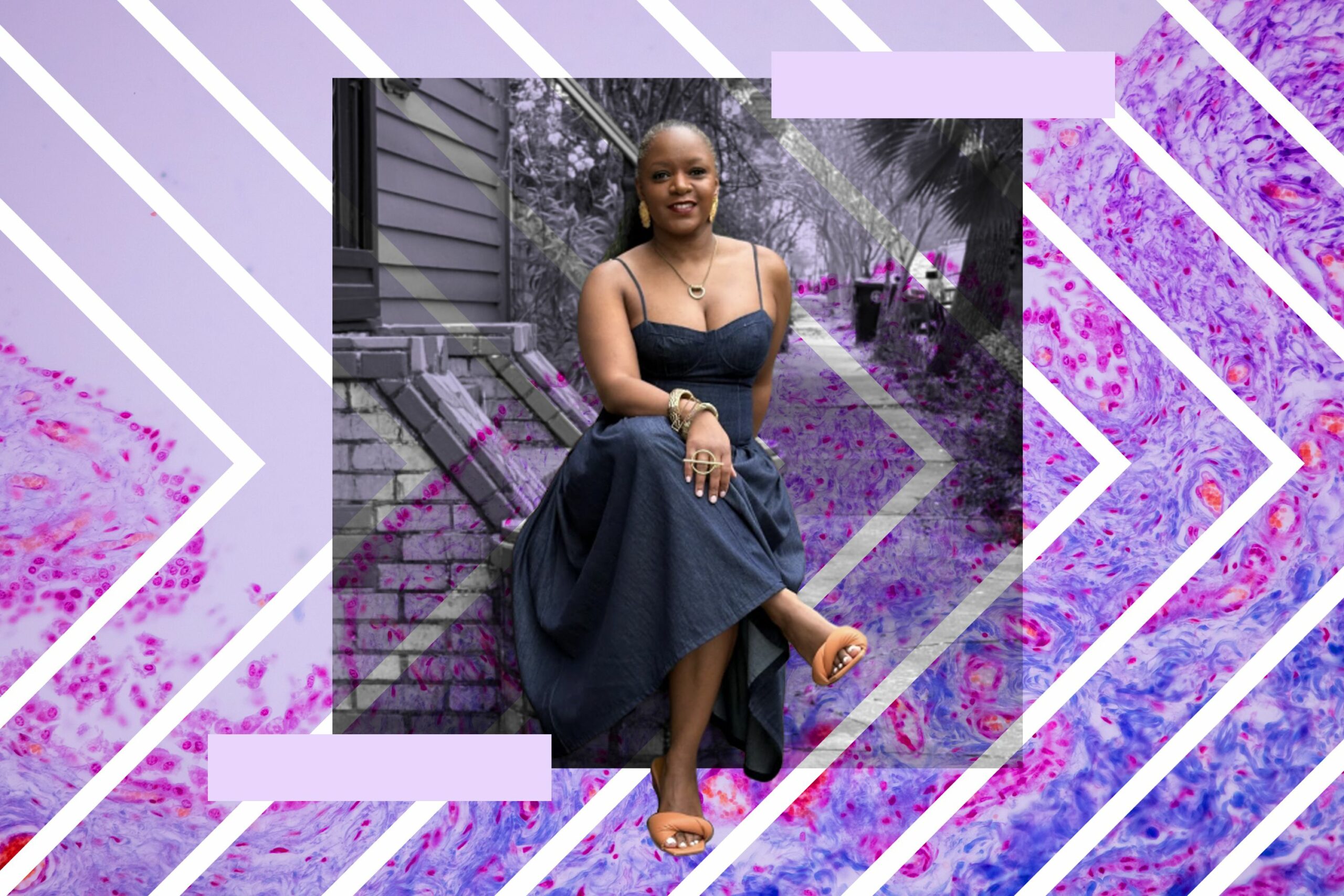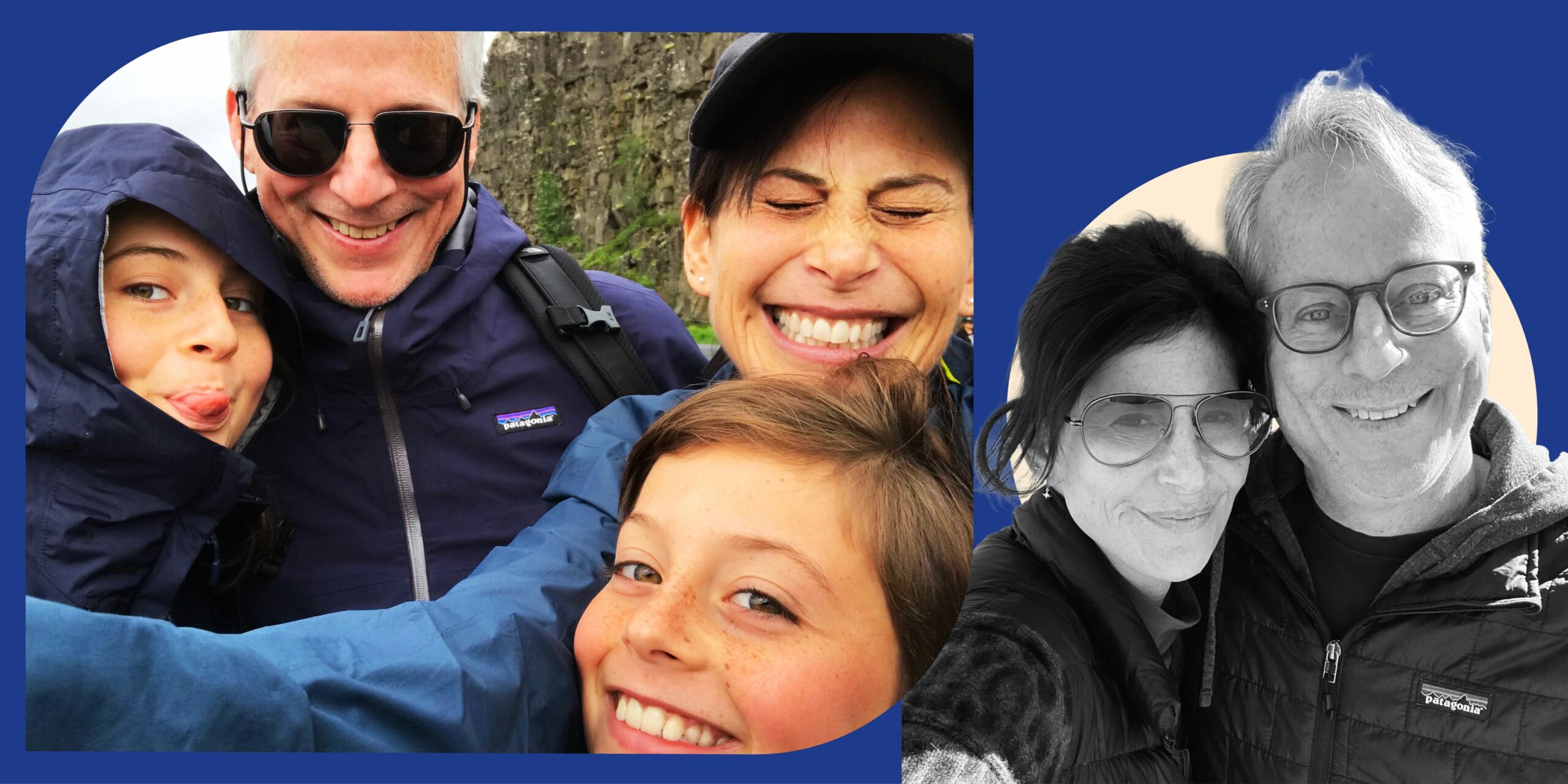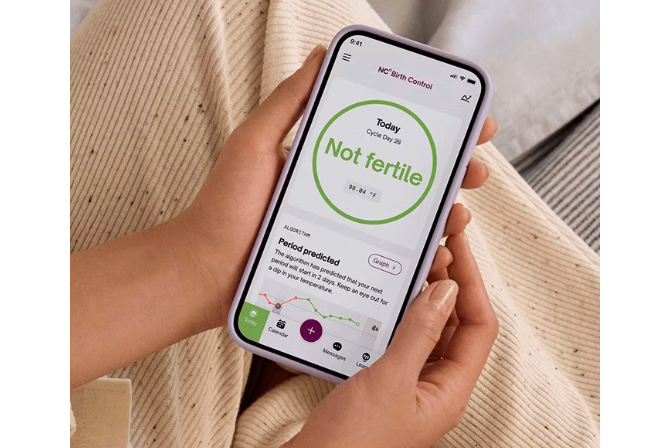The 5 Crucial Questions No One Told Me to Ask When I Was Diagnosed With Fibroids—And Why They Changed Everything
Ever wondered why something as common as uterine fibroids feels more like a mysterious labyrinth than a typical health hiccup? Believe me, I’ve been there—navigating a whirlwind of painful periods, relentless bleeding, and a health system that seemed to have misplaced the map to proper care. It’s baffling and maddening that up to 80 percent of women face fibroids by age 50, yet so many of us endure this ordeal almost in silence, normalizing the pain as if it’s an inevitable rite of passage. But here’s the kicker: fibroids aren’t just benign growths quietly hanging out—they can hijack your life in ways you wouldn’t expect, throwing everything from energy levels to emotional wellbeing into chaos. As I dug deeper into my own fibroid journey, I realized how little I was told about the breadth of treatments, the impact on fertility, and the often overlooked connection to other health issues like anemia and hormone imbalances. If you’re wading through this confusing and painful experience, you’re not alone—and it’s time to shine a light on the questions we all wish we’d asked earlier. Ready to cut through the fog? Let’s dive in. LEARN MORE
Although up to 80 percent of women experience uterine fibroids by age 50, my journey to finding proper care felt like a traumatic solo trip with no map, no guide, and no clear destination.
Painful periods have been a constant since I was a teenager; I got familiar with heavy bleeding, harrowing cramps, and extreme exhaustion. But my uterus kicked things into overdrive the second I turned 40. It marked the beginning of a relentless chapter that caused me to bleed three weeks out of a month for over a year—caused by fibroids.
Fibroids are non-cancerous growths in the uterus that often present during childbearing years. While some are deemed harmless due to their size and location, others can severely impact your quality of life. Doctors can’t fully explain what causes fibroids, but they attribute their growth to a combination of factors, including genetics, family history, hormones, age, stress, and diet. Black women are three times more likely to get them, according to a 2023 study in BMJ Open.
One of the biggest challenges with fibroids is that it takes too long to get them diagnosed.
In December 2023, I sat on a call with my therapist, explaining the debilitating pain I felt during my monthly cycle. In 5 words, she gently unraveled everything I thought I knew about menstruation.
“Why are you normalizing this?” my therapist asked.
I paused with confusion. Aren’t all periods supposed to be painful? Most women experience cramps, so why was I any different? The truth is that, I, like many women, normalized pain, wearing it as a badge of strength, honor, and womanhood. I smiled through the symptoms that were destroying my quality of life; meanwhile, I was soaking through jumbo tampons within an hour.
Following my therapist’s recommendation, I saw a specialist who discovered five fibroids: four of them weren’t problematic, but it was the fifth, a submucosal growth (a fibroid that grows in the inner lining of the uterus), that turned my cycle into a crisis, impeding my quality of life.
For over a year, I experienced irregular bleeding, bloating, frequent urination, iron-deficient anemia, low energy, painful sex, and hair shedding that impacted me daily. Then, despite undergoing two surgeries to have my fibroids removed, the alarming symptoms persisted.
I was told my bleeding would stop after my first surgery, but when it didn’t, I contacted my doctor with concerns. “This is normal,” she told me. And after several emergency video chats, she finally scheduled me for an MRI for a deeper assessment.
“You’re right, this isn’t normal,” she said on a follow-up call. “You’ll have to have the surgery again.” During the first surgery, my doctor removed most of the growth, but not all of it. To get relief, she had to go back in and extract the rest.
I’m not alone. Many women suffer while waiting for proper fibroid care.
Last month, in honor of Fibroids Awareness Month, celebrities like Lupita N’Yongo and Venus Williams used their platforms to speak openly about their experiences.
In an interview with The Today Show, Williams, a 7-time Grand Slam champion and Olympic gold medalist, shared her experience, stating she took her painful period concerns to her doctor, but was dismissed and told her symptoms were “normal.” She recalls “hugging the toilet, waiting for this to pass,” but they didn’t. Williams disclosed that her doctor never explained that the fibroids caused her chronic pain. Another doctor said her only option for relief was a hysterectomy. Now, at 45, with no children, Williams says she didn’t want her choice to become a mother taken away from her, so she worked to find the solutions best suited for her body and lifestyle.
Award-winning actress Lupita N’Yongo also shared her story on Instagram, highlighting that she was diagnosed with fibroids in 2014, the same year she won an Academy Award. In the post, she shared her journey, which included the removal of 30 fibroids. Like many of us, she assumed surgery would keep them from coming back, but her doctor gave her a jarring reality check: “It’s only a matter of time before they grow again,” she shared in the carousel post.
While more women like Williams and N’Yongo are speaking openly about fibroids, it’s still hard to know what to do when you’re diagnosed.
Maybe you’re someone like me two years ago, navigating the experience for the first time. If irregular bleeding and painful periods were the catalyst for your fibroids diagnosis, then you’ve already done a great job of listening to your body. Many women normalize menstrual pain under the guise that their experience is standard, and that extra tampons, heating pads, and Advil are the answer.
While these items might become a staple for routine care, fibroids require more than short-term solutions. I still face the same debilitating symptoms, even after two “successful” surgeries. As I continue to look for answers beyond temporary healing, I want to share a few questions I wish I had asked when I received my fibroids diagnosis—so that you can ask them now.
Meet the experts: Jessica Ritch, MD, is a gynecologist specializing in the management of benign gynecologic conditions, including fibroids, polyps, abnormal uterine bleeding, endometriosis, pelvic pain, ovarian masses, and cervical dysplasia. Faith Ohuoba, MD, is an obstetrician and gynecologist known for her expertise with minimally invasive fibroid treatments, a best-selling author, and a clinical associate professor at the University of Houston.
5 Questions I Wish I Asked When I Got Diagnosed With Fibroids
How serious are fibroids, and what determines how severe symptoms are?
Typically, hearing the word “benign” is cause for a big exhale—a sign that your condition isn’t as serious as it could have been. Fibroids are benign, which means that they’re not cancerous, but, unfortunately, it doesn’t mean that they can’t totally upend your life.
The discomfort of heavy, irregular bleeding, the urge to pee every 15 minutes, the hormonal imbalance that drenched my clothes in sweat, the anemia that drained my energy, and the endless guilt I experienced because my bleeding interfered with my sex life—all of it felt like punishment for having a uterus.
“They are not cancerous, but that does not mean they are not problematic, which can often be the interpretation,” Dr. Ohuoba says. “Fibroids are space-occupying lesions, and the chaos they cause is related to the size, location, and quantity.” All of these factors can exacerbate bleeding, pain, and discomfort. “They can even affect fertility and family planning,” Dr. Ohuoba continues.
A doctor can assess the symptoms of a fibroid based on the location: Submucosal fibroids are found under the lining of the womb, intramural fibroids are on the outside of the womb, cervical fibroids are in the cervix, and intraligamentary fibroids are in the connective tissue next to the womb, with submucosal being the most likely to cause heavy menstrual bleeding, according to the National Library of Medicine. In my case, it wasn’t the size of my fibroid that was causing a major disruption to my body, it was the location, which is what triggers the irregular bleeding.
Larger fibroids wreak havoc too, causing growth so big they mimic a pregnancy belly, and issues beyond what’s visible. They can push against other organs, like your bladder or bowel, which can make you feel like you need to pee or cause gastrointestinal issues, according to the National Institutes of Health.
“Fibroids can cause bloating, body image concerns, and avoidance of sex, social activities and work,” Dr. Ohuoba says. “Having all or some or one of these factors can cause you to not feel like yourself.” So, it’s important to keep in mind that “benign” doesn’t mean fibroids aren’t serious. Have some compassion for yourself and be aware of these impacts, Dr. Ohuoba says. “Knowing what this diagnosis means for your health and life is key,” she says.
What are all of the treatment options?
When I was diagnosed with fibroids, my doctor prescribed birth control to regulate my cycle. The first three months felt blissful. My cycle reduced from five to six days of heavy bleeding to three very light ones with minimal cramps. But by the fourth month, the irregular bleeding began. My doctor suggested a hysteroscopy, a minimally invasive surgery where a thin camera is used to examine the cervix and uterus. Then, she’d conduct a dilation and curettage (D&C), another procedure that would dilate the cervix and remove the fibroid by scraping the uterine lining.
At the time, these surgeries felt like my only solution, mainly because I was unaware of the various treatment options that existed.
Beyond birth control and a hysteroscopy followed by a D&C, there are a few other ways doctors treat fibroids. Surgically, the most common options are a hysteroscopy, abdominal myomectomy, uterine fibroid embolization, fibroid ablation, tubal ligation, or hysterectomy, but there are also medication options too. “The treatment for fibroids has grown beyond typical birth control and now includes fibroid-specific medications such as Myfembree and Oriahnn,” says Dr. Ohuoba. These meds interrupt estrogen and progesterone production—two hormones that stimulate the growth of fibroids—to hopefully shrink them.
But depending on the size, location, and quantity of your fibroids, treatment (and recovery) will look different. “When my own submucosal fibroid was treated hysteroscopically, I was walking around New York City the next day with no pain and minimal bleeding and was pregnant within months,” Dr. Ritch says. “Abdominal myomectomy (a surgical procedure often used to remove larger, hard-to-reach fibroids through an incision on the lower abdomen) has more risk, pain, and recovery time, but might be necessary depending on the size and location of fibroids.”
Meanwhile, fibroid ablation methods, which reduce symptoms by disrupting the fibroid’s blood supply in order to shrink them, can have quicker recovery and less pain or other risks than surgery. “They can be very effective, but fibroids can recur,” Dr. Ritch says.
The best option also depends on your end goal. “Is it to spare fertility? Or to alleviate bleeding or pain? Or all of the above?” she asks. A hysterectomy, which removes the uterus, is considered definitive treatment for fibroids, but it won’t allow for future pregnancies. It is a major surgery with a recovery that includes time off from work for six to eight weeks and hospitalization from overnight to three days.
Ultimately, you and your doctor will be able to determine the right treatment for you—depending on what your fibroids are like, certain options will be better than others—but it’s always helpful to talk through each one to understand why it would or wouldn’t help.
How will my fibroids and my treatment affect my ability to get pregnant and carry to term?
As a childless woman in her 40s, I believed I could defy the odds and have a healthy baby like Ashanti, Hillary Swank, and Tamron Hall. My maternal clock began ticking in my early 30s, and I believed time was on my side. Sadly, my battle with fibroids affected my outlook.
Certain treatment options, like tubal ligation, a surgery that closes a woman’s fallopian tubes, and hysterectomy, a surgery that removes a woman’s uterus, affect your ability to get pregnant. But it’s not just the treatment options that can affect pregnancy; fibroids themselves can affect fertility. “Fibroids can impact the ability to conceive because, in some cases, they create literal physical obstacles. Depending on the location and size, fibroids can also impact the ability to carry a pregnancy to full-term due to miscarriages or preterm births,” says Dr. Ohuoba.
Submucosal fibroids “are particularly likely to prevent fertilized egg cells from settling into the lining,” according to the NIH. In other words, the fibroid that set up shop in my uterus was already working against my chance of conceiving. While my doctor focused on preserving my fertility, the fibroid’s location put me at a disadvantage.
I later learned that hysteroscopic surgeries done with a D&C (of which I had two) can potentially impact pregnancy or increase risks of complications if scar tissue develops, Dr. Ohuoba says. The risk is low, though. The incidence of this condition, known as Asherman syndrome, is 1.6 percent, according to a 2021 study in the Journal of Obstetrics and Gynecological Research.
If having a child is important to you, discuss that early on with your doctor, so that you can know how your fibroid impacts your chances and what treatment options are best. A myomectomy is less invasive and is generally thought to help preserve fertility, but it isn’t an option for everyone, Dr. Ohuoba says.
Are there any other health conditions that fibroids are related to?
I found out about my anemia by accident. Buried deep in my medical chart were three words that weren’t flagged to me: “iron deficient anemia.” When I googled the symptoms, things started to fall into place. The chronic fatigue and hair loss were due to the amount of blood I was losing daily.
“Heavy bleeding from fibroids can cause mild to severe anemia,” Dr. Ritch says. “Long-term anemia causes fatigue, shortness of breath, weakness, dizziness, trouble concentrating, headaches, skin/hair/nail changes, increased infections, heart disease, and more.” (I decided to start taking an iron supplement, something that you should ideally discuss with your doctor first.) Fibroids are also associated with chronic inflammation, she adds, but it’s not clear if chronic inflammation precedes fibroids or if fibroids lead to inflammation.
Fibroids can also be linked to hormone abnormalities. “They are sometimes considered a ‘hormone imbalance’ condition where increased estrogen levels can cause their growth and development,” Dr. Ohuoba says. “Other symptoms linked to elevated estrogen levels include breast pain, hair loss and weight gain.”
After three doctors, three different birth controls, and two surgeries, I finally see a glimmer of light at the end of the tunnel on my fibroids journey. It’s been a long road that could have been different if I had more information—which is a good reminder to keep asking questions and advocate for yourself.

Marsha B. is a freelance journalist and Senior Fashion and Beauty editor for HelloBeautiful. The seasoned writer has been featured in a number of publications, including Huffington Post, Thrive Global, Blavity, and Fashion Bomb Daily. When she is not writing, she enjoys traveling the world and creating the life she has always wanted.




















Post Comment